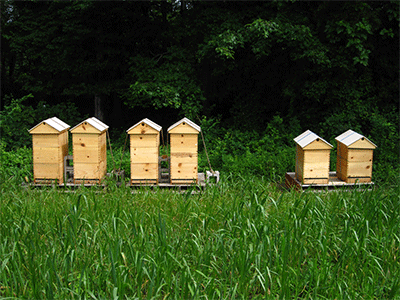- Product Name
- Product Keyword
- Product Model
- Product Summary
- Product Description
- Multi Field Search
Online
Inquiry
Inquiry
Views: 5 Author: Site Editor Publish Time: 2018-03-28 Origin: Site

As the primary pollinators of many fruits, vegetables, nuts and flowers, honeybees play an essential role in the human food chain. Globally the bee population is in serious decline, a phenomenon known as Colony Collapse Disorder (CCD). Keeping a hive or two in your backyard can be a rewarding hobby, bringing a wide range of benefits both for the beekeeper and for the environment.
A colony of bees (a hive) might house as many as 50,000 bees depending on the season, but when well designed and maintained, requires relatively little work for maximum return. “As far as connecting yourself with the natural world, I don’t think you’ll find anything else quite like beekeeping,” says Nick Ritar, director of Milkwood Permaculture and a beekeeper of seven years.
Nick says once you’ve made the decision to become a beekeeper, it’s not necessary to rush out and spend a lot of money on expensive equipment. “We recommend a very minimal approach,” he says. The initial outlay will include boxes and frames to build your hive – Nick advocates a Warrédesign – as well as a smoker, hive tool and protective equipment such as a veil, gloves and jacket.
In Sydney’s Marrickville, self-taught beekeeper Thea Cockle bought her bees online (catching a swarm being the less popular albeit more adventurous option) and has spotted a number of rooftop hives in her inner-city neighbourhood. “They’re more widespread than we know,” she says. While rooftops are a popular choice, they can become very hot over summer, so an awning or shade cloth might be needed. A dry, sunny spot out of the wind with a flight path that allows the bees to avoid doors, footpaths and traffic areas is the preferred position for urban beekeepers.
Once you’ve had your bees for a while the colony can outgrow its hive, resulting in swarming – the primary cause of bee complaints in urban areas – however this is a natural occurrence that isn’t as scary as it sounds. Quite simply, the hive raises a new queen and the old queen leaves the colony with some of the workers, thus creating two colonies. Catching a swarm and starting a new hive means healthy (not to mention free) bees, so it is worthwhile looking into different baiting options when you start out.
• Bees use water to keep the hive cool, and on a hot day a hive might collect half a litre or more to regulate the temperature. Leave out a dish – this is particularly important for households with pools, who may find drowned bees if the animals don’t have another nearby water source.
• “Give your neighbours honey!” says Thea, “If they go outside to get their laundry and get stung, they won’t get angry.” Thea also suggests making use of beeswax with crafty projects like candles, body butter and lip balm.
• All beekeepers in NSW must be registered with the NSW Department of Primary Industries (DPI), failure to do so can result in a fine and the destruction of your hives if they have disease. Rules and regulations vary between states and territories so check before your hive is up and running.
If you don’t want to keep bees yourself, adopting a beehive might be a good option. On Queensland’s Sunshine Coast, Adopt a Beehive came about when longtime apiarist Paula West decided with her partner Gary in 2012 to set up a pollination program whereby they care for the bees and others reap the rewards. In addition to supporting pollination and the protection of the honeybees as well as the business’s apiarist training program, adopters can enjoy raw, cold pressed honey from chemical-free farms.
As the bees only fly two to five kilometres from the hive, it is necessary to have sanctuaries right across the region. “In one location we have an organic rose garden and the rose honey is just exquisite – it’s like the Chanel of honey!” says Paula. Visit Adopt a Beehive for further information.
• To care for your local bee population, avoid the use of toxic chemicals in your garden. This includes pesticides, herbicides, fungicides and in particular Confidor, which contains neonicotinoids – a chemical contributing to the decline of bees worldwide. Employ natural pest management strategies and use products that are certified organic.
• Planting a bee-friendly garden will help to support the bees in your area – Paula recommends purple flowers such as borage, lavender and rosemary. “Flowers vary with their opening times,” Paula says, suggesting a variety of nectar and pollen-rich plants. “That way the bees can get around to all the flowers.”